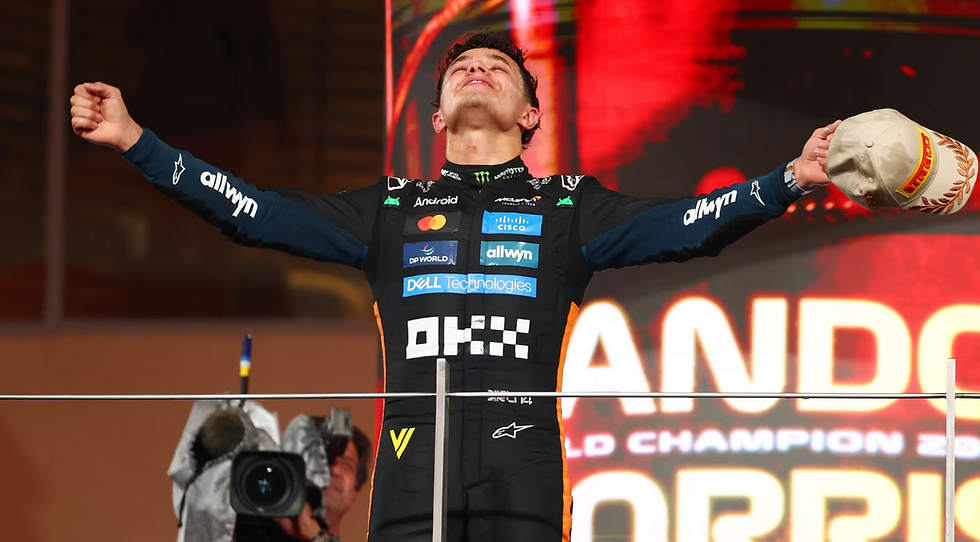The Importance Of The Upcoming Triple Header in Formula One
- Vyas Ponnuri

- Aug 25, 2022
- 4 min read
Updated: Jul 9
Written by Vyas Ponnuri, Edited by Sameena Khan

The F1 season will resume at Spa-Francorchamps, Belgium, on Friday, August 26th, after its annual four-week long summer break. The Belgian Grand Prix weekend is the first of a crucial tripleheader in the season, with the next round at Zandvoort, Netherlands, and the last of the races at Monza, Italy.
While this triple header is sure to serve up action on track, it will also lead to some other topics taking the headlines. So what are these headlining topics going to be? Read on to find out.
On-track rivalries resume
First up, it is the leading events on the track that will resume once again. Fresh off the summer break, the drivers and teams will be raring to go for glory in the final nine rounds of the season.
While Max Verstappen may have a commanding lead in the standings over his rival Charles Leclerc, he still has to maintain his lead until the end of the season. However, a couple of low points finishes in the triple header and Leclerc taking victories in the same races could rejuvenate the championship battle. And, as this unpredictable season has shown, disaster can strike anytime.
Red Bull’s rivals Ferrari will be looking to bounce back from their torrid showing in the preceding Hungarian Grand Prix. While Mattia Binotto is defiant not to change the team’s approach into the second half, he will have to rectify the strategic errors made by the team throughout this season. The upcoming triple-header presents opportunities to improve in this department and pick up many points.
Mercedes will also be looking to build on their recent momentum in the upcoming triple header, taking double-podium finishes in both races. They are only 30 points behind Ferrari. With the technical directive regarding flexi-floors coming into effect from the Belgian GP, they expect to regularly fight for wins and podiums.
McLaren and Alpine will resume their on-track battle for fourth in the standings. Alpine are ahead by a slender margin of four points.
McLaren will look at Daniel Ricciardo to gather more points for the team. Whereas Alpine will have to ensure their drivers reduce their on-track battles, which cost the team points in Hungary. The French team will also be looking to improve on the strategy department, too. This battle is set to go down to the wire until the Abu Dhabi finale.

As for the bottom half of the field, the likes of Alfa Romeo, Haas, Alpha Tauri, Aston Martin, and Williams will be looking to maintain their positions in the standings, with points much harder to come by for these teams. Alfa Romeo will be looking to stay ahead of their fellow Ferrari-powered rivals Haas. Aston Martin will be looking to collect crucial points and overtake Alpha Tauri for eighth in the standings. If a race has a high attrition rate, these teams will be looking to collect a bag of points.
The new Technical Directive regarding flexi-floors
Another topic to become a talking point will be the new Technical Directive coming into effect from the Belgian Grand Prix weekend. This directive is a controversial one, which aims to reduce the aerodynamic bouncing that is faced by the current generation of Formula 1 cars. This was first brought to attention in Canada and was expected to be enforced by the French Grand Prix weekend. However, this was then pushed back to the Belgian Grand Prix weekend to allow teams to make possible changes to the plank and skid plate assemblies.
The FIA discovered some teams were running flexi-floors, and this flexing was beyond what is stated in the regulations. They also found that the planks were deformed much more than the regulations had stated. Red Bull and Ferrari, the title contenders, were unhappy with introducing this technical directive. The effects of this technical directive will be witnessed first at Spa. They can potentially shake up the pecking order of the grid.
The Driver Market
The summer break saw a driver market saga regarding Fernando Alonso, Oscar Piastri and Alpine; this will be the first weekend after the events when all these parties meet. In addition, McLaren and Alpine will be battling off-track regarding young star Oscar Piastri. Piastri stated that he wouldn’t be driving for the Alpine next season regardless of their press release. It will be interesting to see how the Oscar Piastri contract saga plays out.
Elsewhere, Formula 2 driver Logan Sargeant has stated that he will have to perform well at the upcoming triple header to be in contention for a seat with Williams in 2023. Only four weekends are left in the F2 championship, so the American has his task cut out to prove to Williams that he is worthy of a race seat in 2023.
Elsewhere, Alpha Tauri’s Yuki Tsunoda and Haas’ Mick Schumacher are yet to sign a contract with their respective teams for next season. However, the next triple header weekends could see some activity regarding these two drivers and their contracts for the 2023 season.

Final Engine Freeze Deadline
All development on the engines of F1 cars will stop by 1 September 2022, the second deadline regarding the engine freeze for the next three seasons. The initial deadline for the engine freeze was before the start of the season, on 1 March 2022. This saw manufacturers freeze development on the Internal Combustion Engines (ICE), Turbo, Motor Generator Unit - Heat (MGU-H), Exhaust systems, Engine oil specifications and fuel specifications. Teams had to homologate these parts with the FIA. These will be used for the next three seasons until the new engine regulations come into force in 2026.
However, an additional second deadline had been provided to teams to work on specific parts until 1 September 2022. The features considered here are the Motor Generator Units - Kinetic (MGU-K), Energy Stores, and Control Electronics. In the event of manufacturers experiencing issues with the reliability of their engine components, they must follow a complex process to be able to modify the parts with the permission of the FIA. The other manufacturers will be given a heads-up regarding this and be allowed to provide their opinions. This will prevent teams from using reliability fixes as an excuse to gain performance.
The weekend at Spa will be the final weekend before this engine freeze comes into force. After that, teams will assess the pace of their engines for one last time before homologating the final parts with the FIA.







Comments